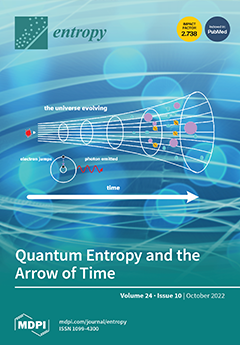This paper combines the mechanical efficiency theory and finite time thermodynamic theory to perform optimization on an irreversible Stirling heat-engine cycle, in which heat transfer between working fluid and heat reservoir obeys linear phenomenological heat-transfer law. There are mechanical losses, as well as heat leakage, thermal resistance, and regeneration loss. We treated temperature ratio
of working fluid and volume compression ratio
as optimization variables, and used the NSGA-II algorithm to carry out multi-objective optimization on four optimization objectives, namely, dimensionless shaft power output
, braking thermal efficiency
, dimensionless efficient power
and dimensionless power density
. The optimal solutions of four-, three-, two-, and single-objective optimizations are reached by selecting the minimum deviation indexes
with the three decision-making strategies, namely, TOPSIS, LINMAP, and Shannon Entropy. The optimization results show that the
reached by TOPSIS and LINMAP strategies are both 0.1683 and better than the Shannon Entropy strategy for four-objective optimization, while the
s reached for single-objective optimizations at maximum
,
,
, and
conditions are 0.1978, 0.8624, 0.3319, and 0.3032, which are all bigger than 0.1683. This indicates that multi-objective optimization results are better when choosing appropriate decision-making strategies.
Full article






